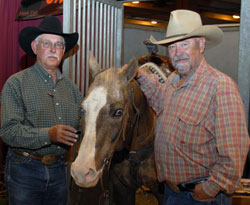 You never know who you’re going to run into when you’re out doing some agriblogging. For example, I got to sit down with actor Barry Corbin yesterday at the World Championship Appaloosa Show. He recently completed an award winning short film titled, “Trail End.” The movie stars a great Appaloosa horse. On the left is Tony Nix, owner of the horse in the middle, Chippen Gold (“Chip”). On the right is Barry Corbin. Barry’s starred or guest-starred in too many movies and tv series to list.
You never know who you’re going to run into when you’re out doing some agriblogging. For example, I got to sit down with actor Barry Corbin yesterday at the World Championship Appaloosa Show. He recently completed an award winning short film titled, “Trail End.” The movie stars a great Appaloosa horse. On the left is Tony Nix, owner of the horse in the middle, Chippen Gold (“Chip”). On the right is Barry Corbin. Barry’s starred or guest-starred in too many movies and tv series to list.
I spoke to both of them after yesterday’s screening of the movie here at the World Show. Barry says the horse was the star and he only played a supporting role. He says about Chip, “He supported me but I supported him. It was kind of like a partnership.” In my interview you’ll hear Barry describe the movie and talk about his other experiences in the acting world. I asked him for some behind the scenes stories from making Trail End but all he could really say is that he had a good time and that it was, “Like a week and a couple days of a trail ride.”
You can listen to my interview with Barry here: awcs-07-corbin.mp3
When I spoke to Tony he says that he got involved after someone at the ApHC made a connection to him when the movie company called seeking a horse in Kansas. He says that Chip was great and showed that an Appaloosa (even an 18 yr. old one) can star in a movie. He also thinks it might be pretty cool if someone would need him to star in a movie too.
You can listen to my interview with Tony here: awcs-07-nix.mp3

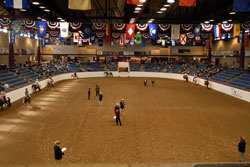 It’s been an interesting afternoon here at the
It’s been an interesting afternoon here at the  Farmers and ranchers can tune into a brand new show that’s devoted solely to farm machinery beginning tomorrow. Successful Farming is launching it’s
Farmers and ranchers can tune into a brand new show that’s devoted solely to farm machinery beginning tomorrow. Successful Farming is launching it’s 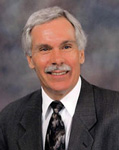 President Bush made a surprise nomination for Secretary of Agriculture Wednesday afternoon – a little-known former governor from North Dakota, Ed Schafer.
President Bush made a surprise nomination for Secretary of Agriculture Wednesday afternoon – a little-known former governor from North Dakota, Ed Schafer. The first-ever
The first-ever 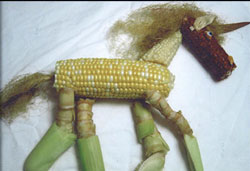 Renowned vegetarian chef and produce expert, Curtis Aikens, selected “Island Fresh Tostadas with Pineapple-Avocado Salsa” as the contest’s winning recipe. Its creator, Karen Gulkin of Simpsonville, S.C. will now have the opportunity to sharpen her veggie creativity skills with a class in veggie sculpting. As the winner of the recipe portion of the Veggie Creations Contest, Karen has earned a trip for two to Virginia for a hands-on veggie- sculpting class from James Parker.
Renowned vegetarian chef and produce expert, Curtis Aikens, selected “Island Fresh Tostadas with Pineapple-Avocado Salsa” as the contest’s winning recipe. Its creator, Karen Gulkin of Simpsonville, S.C. will now have the opportunity to sharpen her veggie creativity skills with a class in veggie sculpting. As the winner of the recipe portion of the Veggie Creations Contest, Karen has earned a trip for two to Virginia for a hands-on veggie- sculpting class from James Parker. Energy and fuels aren’t the only commodities America is becoming more environmentally conscious about. World-class chef and restaurateur Mario Batali is encouraging consumers to become eco-friendly with their food. Mario is working with the
Energy and fuels aren’t the only commodities America is becoming more environmentally conscious about. World-class chef and restaurateur Mario Batali is encouraging consumers to become eco-friendly with their food. Mario is working with the 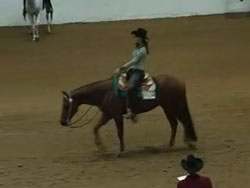 I will not be in costume. I’ll be working at the
I will not be in costume. I’ll be working at the  In this week’s ZimmCast Cindy interviews Randy Koenen,
In this week’s ZimmCast Cindy interviews Randy Koenen, 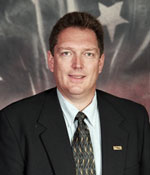 The program concludes this week with music from the
The program concludes this week with music from the 
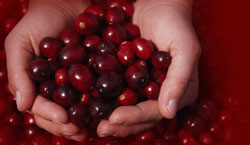 Fall is well underway and winter is fast approaching. Although various regions of the country seem to be staving off Old Man Frost for the most part, the
Fall is well underway and winter is fast approaching. Although various regions of the country seem to be staving off Old Man Frost for the most part, the 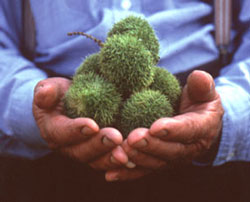 The chestnut is teetering on the brink of extinction. At least, that’s what the
The chestnut is teetering on the brink of extinction. At least, that’s what the